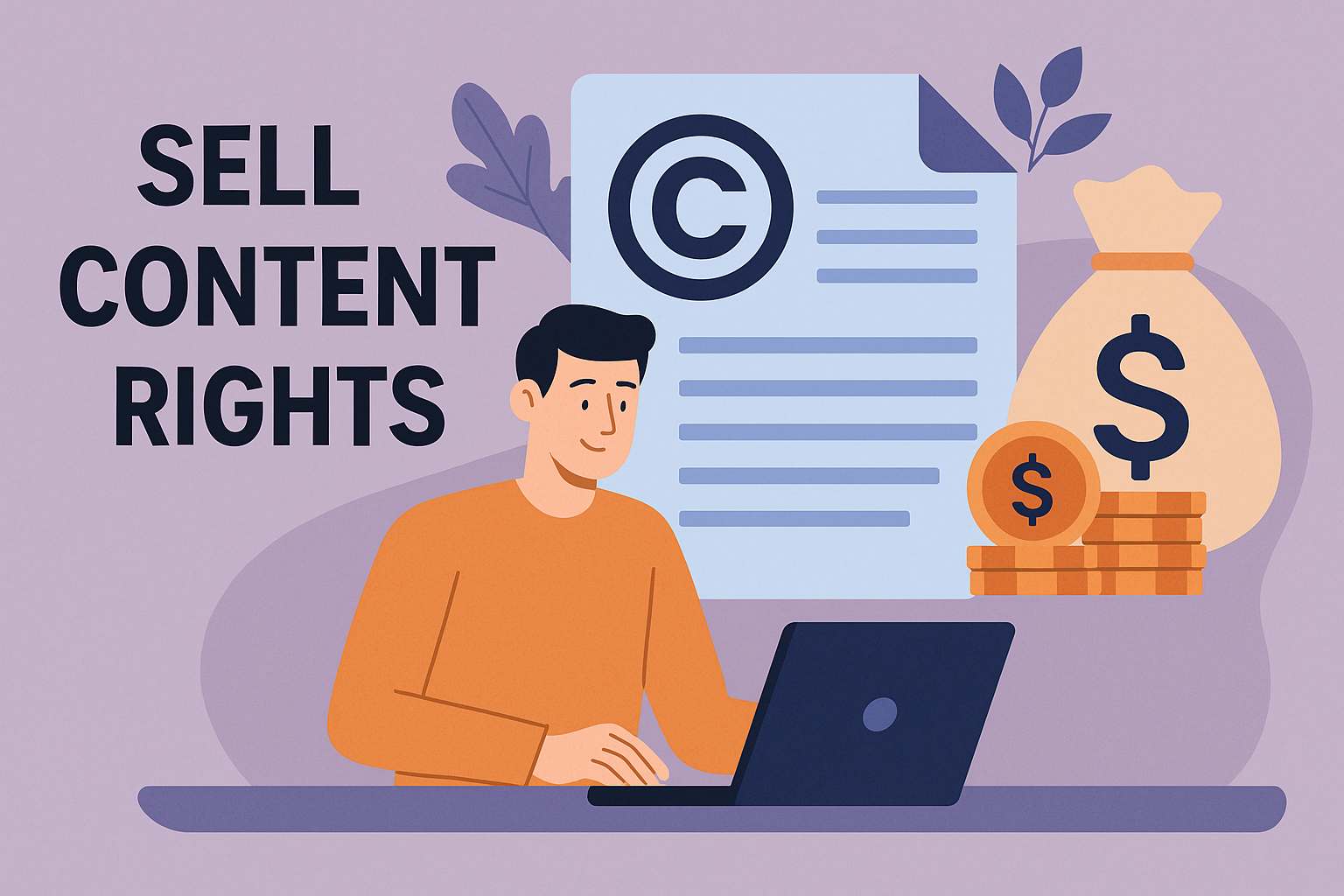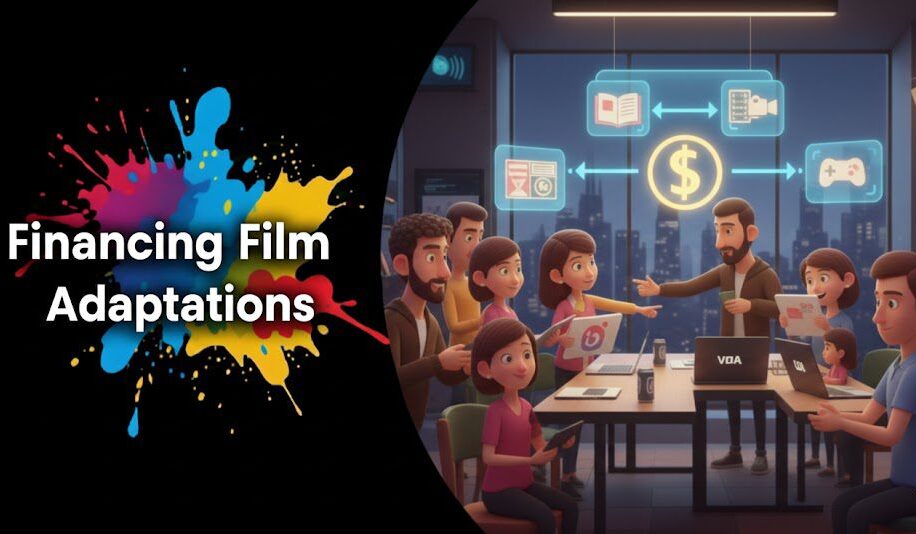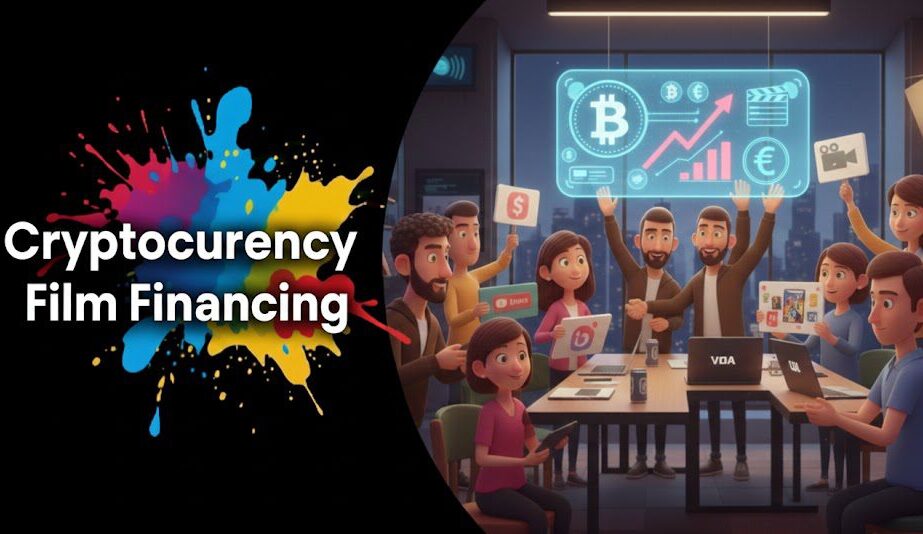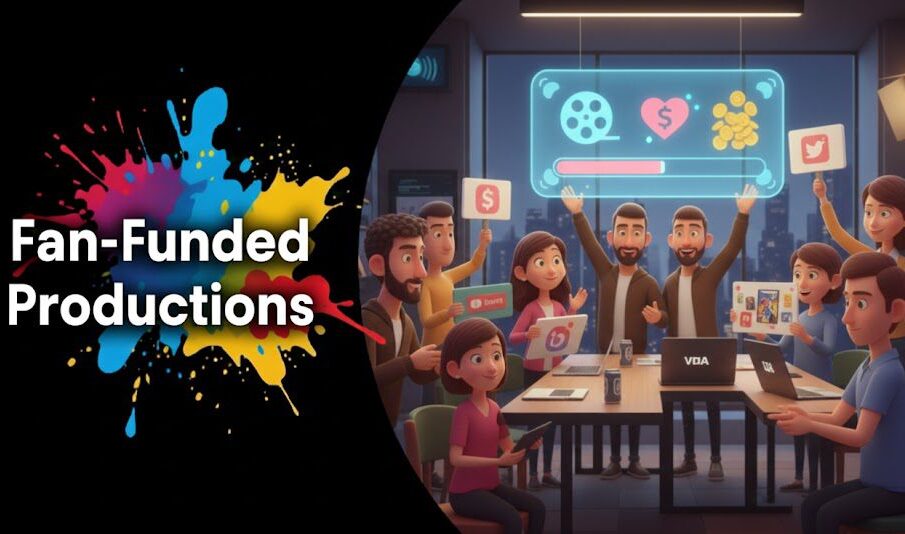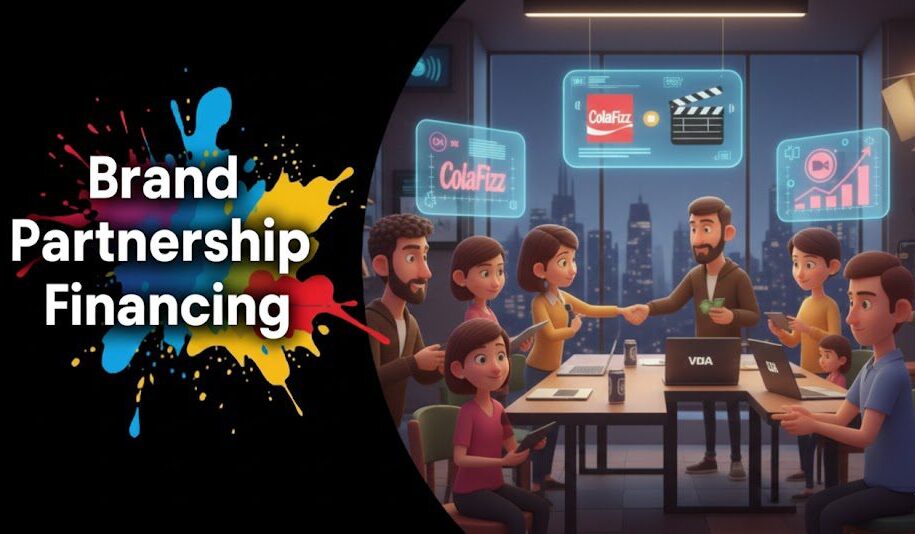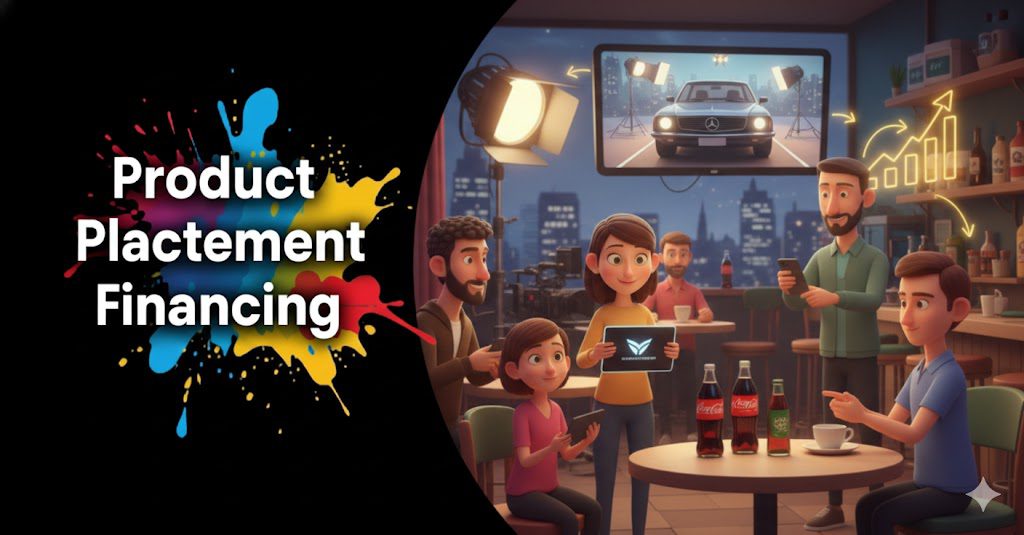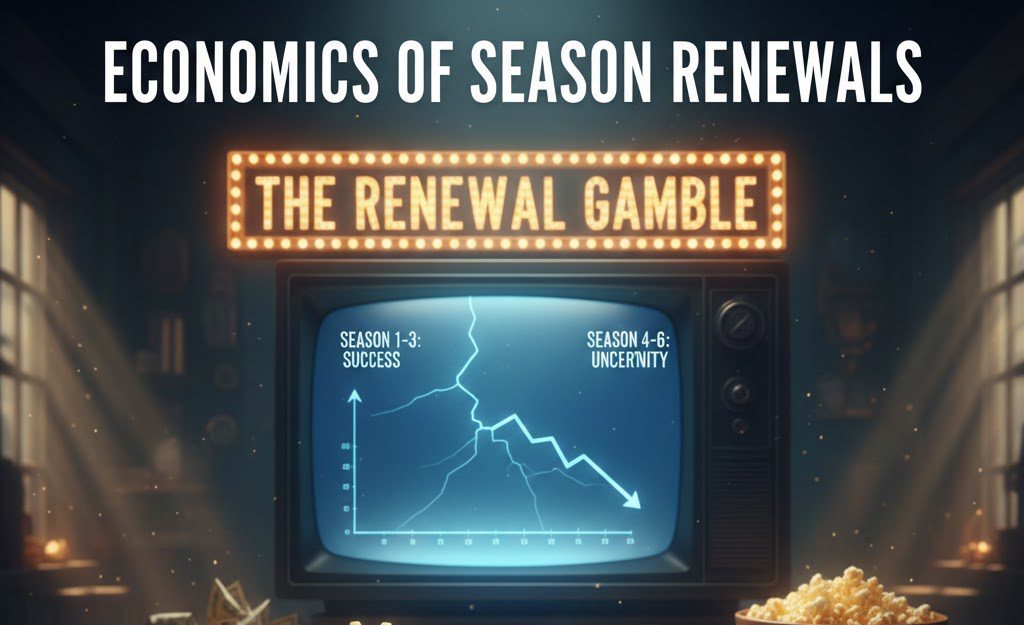Introduction
So, you’ve poured your heart, soul, and resources into creating an amazing film or TV show. Congratulations! But the journey doesn’t end there. To ensure your creation reaches its widest possible audience and generates the revenue it deserves, you need effective strategies to sell content rights and implement smart content distribution strategies.
Whether you’re an independent producer wondering how to license my content, a distributor looking to expand your reach, or a sales agent aiming to monetize film catalog assets, this guide is for you. We’ll explore how to prepare your content for sale, identify the right buyers, navigate deal structures, and leverage modern tools like a global content marketplace for sellers to achieve global success. Let’s unlock the full potential of your valuable content!
Table of content
- Introduction
- Key-Takeaways
- Understanding Your Content’s Value: The First Step to Sell Content Rights
- Step 1: Preparing Your Content for the Marketplace
- Step 2: Identifying and Reaching Potential Buyers and Platforms
- Step 3: Choosing Your Content Distribution Strategies
- Step 4: Negotiating the Deal – Key Considerations for Sellers
- Step 5: Leveraging Global Content Marketplaces for Sellers
- Step 6: Post-Deal: Managing Rights and Relationships
- Conclusion
- FAQs
Key Takeaways
| Selling Aspect | Core Insight | |
|---|---|---|
| Sell Content Rights Strategy | A planned approach to licensing your film/TV show to various platforms and territories to maximize reach and revenue. | |
| Content Preparation | Creating high-quality marketing materials (trailers, screeners, key art) and ensuring all legal clearances (chain of title) are in order. | |
| Identifying Buyers | Researching platforms, broadcasters, and distributors whose audience and programming needs align with your content. | |
| Content Distribution Strategies | Deciding on direct sales vs. using sales agents/distributors, windowing strategies, and targeting specific territories/platforms. | |
| Pricing and Deal Models | Understanding content valuation, and being flexible with models like flat fees, MGs, or revenue shares. | |
| Global Marketplaces | Leveraging online platforms like Vitrina to connect with international buyers and showcase your catalog. | |
| Further Learning | For a comprehensive overview of licensing, see our Definitive Guide to Content Licensing. | |
Wondering How to License Your Content for Maximum Value?

Understanding Your Content’s Value: The First Step to Sell Content Rights
Before you can effectively sell content rights or devise winning content distribution strategies, you need a realistic understanding of your content’s value in the marketplace. This isn’t just about how much passion or effort went into it; it’s about assessing its commercial appeal, target audience, uniqueness, and how it compares to other content available for licensing. A clear-eyed valuation will inform your pricing expectations, your pitching strategy, and the types of buyers you target. This foundational step is crucial if you want to successfully monetize film catalog assets or get the best deal for your new TV show.
Factors Determining Content Value:
- Genre and Target Audience: Is it a universally popular genre (e.g., action, family animation) or more niche? Who is the primary audience, and how large is that demographic in potential territories?
- Production Quality and Talent: High production values, recognizable actors, acclaimed directors, or award wins can significantly boost value.
- Uniqueness and Originality: Does your content offer a fresh perspective, a unique story, or fill a gap in the market?
- Performance History (if any): Previous theatrical box office, TV ratings, festival success, or streaming data can be strong indicators of value.
- Rights Availability: The specific rights you control (e.g., all territories, all platforms vs. limited rights) will impact overall value.
- Market Comparables (“Comps”): Research what similar content has licensed for. This is key when figuring out how to license my content at the right price.
- Timeliness and Evergreen Potential: Is it topical and in current demand, or does it have “evergreen” qualities that will make it valuable for years to come?
Researching Your Market Position:
To gauge value:
- Attend industry markets (even virtually) to see what’s selling and at what general price points.
- Talk to experienced distributors or sales agents for their assessment.
- Utilize online databases and platforms like Vitrina that may offer insights into buyer demand and comparable content.
A realistic valuation is the starting point for smart content distribution strategies.
| Valuation Factor | Impact on Seller’s Strategy | Example |
|---|---|---|
| Genre Popularity | Influences target buyers and pricing expectations. | A kids’ animated series might target global children’s broadcasters and SVODs. |
| Recognizable Talent | Increases marketability and potential license fees. | A film with an A-list star has higher initial value. |
| Market Comps | Provides a benchmark for pricing negotiations. | Knowing what similar indie documentaries licensed for helps set expectations. |
Step 1: Preparing Your Content for the Marketplace
Once you have a handle on your content’s potential value, the next crucial step in your plan to sell content rights is meticulous preparation. You wouldn’t go to an important job interview unprepared, and similarly, your content needs to be presented in the best possible light to attract buyers. This involves creating professional marketing materials, ensuring all your legal ducks are in a row (especially your chain of title), and having your technical assets ready for delivery. Proper preparation can significantly enhance your chances of success when using any TV show sales platform or pitching directly.
Essential Marketing and Sales Materials:
To make a strong impression, you’ll need:
- High-Quality Screener: A secure link or file of the full film or representative episodes of a series for buyers to review.
- Compelling Trailer/Sizzle Reel: A short, engaging promo that highlights the best aspects of your content.
- Synopsis: A concise summary of the plot, and longer-form treatments if requested.
- Key Art/Poster: Professional and eye-catching visuals.
- EPK (Electronic Press Kit): Including cast and crew bios, production notes, high-resolution stills, festival laurels, awards, and positive reviews.
- One-Sheet/Sales Sheet: A single page summarizing key information: logline, genre, target audience, key talent, available rights, contact info.
These materials are vital for your content distribution strategies.
Legal Readiness: Chain of Title and Clearances
This is non-negotiable. Buyers will require proof that you own all the necessary rights to license the content:
- Chain of Title Documentation: All agreements proving ownership of the script, underlying rights (if based on a book, etc.), music rights (sync and master licenses for all music used), talent agreements (actors, director), and any other IP.
- Errors & Omissions (E&O) Insurance: Many buyers will require you to have E&O insurance, which protects against claims of defamation, copyright infringement, invasion of privacy, etc.
- Music Cue Sheet: A detailed list of all music used in the production, including composer, publisher, and duration.
- Clearances: Proof that any logos, brands, locations, or individuals appearing in the content have been cleared for use.
Having these in order helps you understand how to license my content smoothly.
Technical Preparation: Master Files and Delivery Assets
Be prepared to deliver:
- High-Resolution Master File(s): In the technical specifications commonly required by broadcasters and platforms (e.g., ProRes, XDCAM).
- Textless Backgrounds (for graphics/titles): Allows buyers to create localized versions of on-screen text.
- Separate Audio Stems (M&E – Music & Effects): Essential for dubbing into other languages.
- Dialogue Lists/Scripts: For subtitling and dubbing purposes.
Being technically ready shows professionalism and speeds up the independent content distribution process post-deal.
| Preparation Area | Key Elements | Why It’s Important for Sellers |
|---|---|---|
| Marketing Materials | Trailer, screener, key art, synopsis, EPK. | Creates initial interest, showcases content professionally. |
| Legal Documentation | Chain of title, E&O insurance, music cue sheets, clearances. | Proves ownership, mitigates legal risks for buyers, essential for deal closure. |
| Technical Assets | Master files, M&E tracks, dialogue lists. | Ensures smooth delivery post-agreement, enables localization. |
Step 2: Identifying and Reaching Potential Buyers and Platforms
With your content polished and all your materials in order, the next stage in your quest to sell content rights is identifying and reaching out to the right potential buyers. This isn’t about a scattergun approach; it’s about targeted outreach to platforms, broadcasters, and distributors whose programming needs and audience demographics align with what your content offers. Effective content distribution strategies hinge on connecting with the most suitable partners who will value and properly exploit your film or TV show.
Researching and Targeting Potential Licensees:
- Understand Platform Mandates: What kind of content does a specific TV channel, SVOD service, or AVOD platform typically acquire? Who is their target audience? (e.g., a platform focused on arthouse cinema won’t be the right fit for a broad comedy).
- Analyze Competitor Content: See what types of content similar platforms are licensing. This can give clues about demand.
- Identify Key Acquisition Executives: Find out who the decision-makers are at your target companies. LinkedIn, industry directories, and market guides can be helpful.
- Consider Territorial Focus: Some buyers focus on specific regions. If you have global rights, you’ll need to identify buyers in multiple territories.
Channels for Reaching Buyers:
- Content Markets and Film Festivals: Still a primary way to meet buyers face-to-face, pitch projects, and close deals. Examples: MIPCOM, Cannes, Berlinale EFM, TIFF.
- Distributors and Sales Agents: Partnering with an established distributor or sales agent can give you access to their existing network of buyer relationships and expertise in specific markets. This is a common route for independent content distribution.
- Direct Pitching: If you have a strong project and have identified suitable buyers, a well-crafted direct pitch (usually via email initially) can be effective. Personalize your pitch!
- Online B2B Content Marketplaces: Platforms like Vitrina serve as a global content marketplace for sellers, allowing you to list your available titles, specify rights, and connect with a curated network of verified international buyers. This can greatly expand your reach beyond traditional channels.
- Industry Networking Events: Conferences, workshops, and other industry gatherings provide opportunities to connect with potential partners.
Using a mix of these channels will maximize your chances of finding the right home for your content.
| Buyer Identification Method | Pros for Seller | Cons for Seller |
|---|---|---|
| Researching Platform Mandates | Ensures targeted, relevant pitching. | Can be time-consuming. |
| Attending Content Markets | Direct access to many buyers, networking. | Expensive, competitive environment. |
| Using Sales Agents | Leverages existing relationships and market expertise. | Agent takes a commission. |
| Online Marketplaces (e.g., Vitrina) | Global reach, targeted buyer discovery, efficient. | Requires creating a compelling listing. |
Seeking Effective Independent Content Distribution Solutions?

Step 3: Choosing Your Content Distribution Strategies
Once you’ve identified potential buyers, you need to decide on your overarching content distribution strategies. This involves making key decisions about how you want to approach the market to sell content rights. Will you handle sales directly, or work through intermediaries? Will you aim for broad, non-exclusive deals, or target premium exclusive arrangements? How will you approach different territories and platforms? These strategic choices will significantly impact your ability to monetize film catalog assets and new productions effectively and determine how to license my content for maximum impact.
Direct Sales vs. Working with Sales Agents/Distributors:
Direct Sales:
- Pros: You retain full control over the sales process and keep 100% of the license fees (minus your own sales costs). Good if you have strong existing buyer relationships or a very high-profile project.
- Cons: Time-consuming, requires significant market knowledge and networking capabilities, may limit reach if your network is small.
Working with Sales Agents/Distributors:
- Pros: They have established buyer networks, market expertise, attend all major markets, and can handle negotiations and contract administration. They can often secure better deals or reach markets you couldn’t access alone. This is often the preferred route for independent content distribution globally.
- Cons: They take a commission (typically 15-35% of license fees) and you relinquish some control over the sales process. Choosing the right agent/distributor is crucial.
Many producers use a hybrid approach, handling some territories/deals directly and using agents for others.
Windowing and Release Strategies:
As a seller, you need to think about how different licensing windows (theatrical, home video, TVOD, SVOD, Pay TV, Free TV, AVOD) can be used to maximize revenue over the life of your content.
- Traditional Waterfall: Releasing content sequentially through windows to maximize revenue at each stage.
- Day-and-Date Releases: Releasing simultaneously in theaters and on a VOD platform (less common for broad theatrical, more for specific strategies).
- Platform-Specific Strategies: Some content might be best suited for a direct-to-SVOD strategy, bypassing other windows.
Your strategy for TV show sales platform choices or film releases will depend on the content type and market dynamics.
Territorial Sales Strategy:
Decide whether to:
- Sell territory by territory: Allows you to customize deals and potentially get higher aggregate revenue but is more complex to manage.
- Sell multi-territory deals: To a single buyer covering a large region (e.g., all of Europe to one platform). Simpler, but might not always yield the highest total value compared to individual territory sales.
- Global Deals: Less common for full exclusivity, but possible with major global streamers for certain content.
| Distribution Model | Key Characteristic | Best Suited For |
|---|---|---|
| Direct Sales | Producer/Rights Holder sells directly to buyers. | Established producers with strong networks, high-profile content. |
| Sales Agent/Distributor | Intermediary handles sales to buyers. | Most independent producers, reaching international markets. |
| Strategic Windowing | Timed release across different platforms/models. | Maximizing lifecycle revenue for films and TV series. |
Step 4: Negotiating the Deal – Key Considerations for Sellers
Negotiation is where your preparation and strategy culminate in an actual agreement to sell content rights. As a seller (licensor), your goal is to secure the best possible terms that maximize revenue, protect your intellectual property, and ensure your content is well-represented by the licensee. This involves more than just haggling over price; it’s about understanding the value of different rights, being flexible where appropriate, and clearly defining all aspects of the deal within your content distribution strategies. Knowing how to license my content effectively means being a skilled negotiator.
Key Financial Terms to Negotiate:
- License Fee: The core monetary compensation. This could be a flat fee, a Minimum Guarantee (MG) against royalties, or a pure revenue share. Be prepared to justify your asking price with market comps and your content’s unique value.
- Payment Schedule: When will you get paid? Upfront, upon delivery, in installments? Aim for favorable cash flow.
- Royalty Rates/Revenue Share Percentages: If applicable, negotiate fair percentages and ensure clear definitions of the revenue base from which your share is calculated.
- Bonuses/Overages: Can you negotiate performance-based bonuses if the content exceeds certain viewership or revenue thresholds?
Negotiating Rights and Exclusivity:
- Grant of Rights: Be very specific about which rights you are granting (e.g., SVOD only, or SVOD + limited TVOD?). Avoid granting overly broad rights unless adequately compensated. This is crucial for efforts to monetize film catalog assets over time.
- Territory and Term: License for specific territories and for a defined period. Shorter terms allow you to re-license sooner if the content remains valuable.
- Exclusivity: Exclusive deals command higher fees. If granting exclusivity, ensure the compensation reflects this. Consider if non-exclusive deals in some windows/territories could be more beneficial.
- Holdbacks: Negotiate holdbacks that protect your ability to exploit other rights or windows without conflict.
Protecting Your IP and Brand:
- Approval Rights: Can you retain approval over key marketing materials or significant edits (if edits are permitted)?
- Warranties and Indemnities: While you provide warranties about your ownership, ensure the licensee also has obligations (e.g., to not use content illegally).
- Termination Clauses: Ensure you have clear grounds for terminating the agreement if the licensee breaches key terms (e.g., non-payment).
- Reporting Requirements: For royalty/revenue share deals, ensure the licensee has clear and timely reporting obligations, and consider audit rights.
| Negotiation Area for Seller | Ideal Outcome | Possible Compromise |
|---|---|---|
| License Fee/MG | Highest possible upfront payment. | Slightly lower MG with better royalty percentage or performance bonuses. |
| Scope of Rights/Exclusivity | Grant narrow, specific rights for higher aggregate value. | Grant slightly broader rights for a significantly higher fee or longer commitment. |
| Term Length | Shorter term to allow for future re-licensing at potentially higher rates. | Longer term in exchange for a higher overall fee or stronger marketing commitment. |
Step 5: Leveraging Global Content Marketplaces for Sellers
In today’s interconnected world, a key component of modern content distribution strategies is leveraging online platforms designed to connect content sellers with a global pool of buyers. These digital or global content marketplace for sellers, such as Vitrina, offer powerful tools to showcase your catalog, manage availabilities, and discover new licensing opportunities that might be difficult to find through traditional channels alone. For producers and distributors looking to sell content rights internationally or efficiently manage how they license my content, these platforms are becoming indispensable.
Benefits of Using Online Content Marketplaces:
- Increased Visibility and Global Reach: Showcase your film and TV catalog to a curated network of verified international buyers (broadcasters, streaming platforms, distributors) actively seeking content.
- Efficient Discovery for Buyers: Buyers can easily search and filter for content based on specific criteria (genre, rights, territory, language), meaning your relevant titles get seen by the right people.
- Direct Connection: Many platforms facilitate direct communication and initial negotiations between sellers and interested buyers.
- Streamlined Information Sharing: Easily upload and share marketing materials, screeners, and rights availability information in a standardized format.
- Data and Insights: Some platforms provide analytics on who is viewing your listings, what types of buyers are active, and general market trends, helping you refine your sales strategy. Vitrina’s Project Tracker is an example of a tool offering such market intelligence.
- Cost-Effective Marketing: Can be a more affordable way to reach a broad international audience compared to the expense of attending multiple physical content markets.
These platforms effectively serve as a dynamic TV show sales platform and film marketplace.
Best Practices for Sellers on These Platforms:
- Create Comprehensive and Compelling Listings: Include high-quality key art, detailed synopses, trailers, full metadata (cast, crew, genre, year, languages), and clear information on available rights and territories.
- Keep Your Catalog Updated: Regularly update availabilities as deals are done and new content becomes available.
- Be Responsive: Promptly reply to inquiries from potential buyers.
- Utilize Platform Tools: Take advantage of features like secure screeners, direct messaging, and analytics.
| Marketplace Feature | Advantage for Seller | How it Helps Monetize Film Catalog |
|---|---|---|
| Global Buyer Network | Access to buyers in diverse international territories. | Increases opportunities for international sales. |
| Targeted Search/Filtering | Content is found by buyers specifically looking for it. | Reduces wasted outreach, connects with qualified leads. |
| Data & Analytics | Insights into buyer interest and market trends. | Helps refine sales strategy and identify new opportunities. |
Step 6: Post-Deal: Managing Rights and Relationships
Successfully executing a deal to sell content rights is a major milestone, but the work doesn’t end when the contract is signed. Effective post-deal management is a crucial, often overlooked, part of your overall content distribution strategies. This involves ensuring the licensee adheres to the terms, managing any financial reporting and payments, tracking your rights to identify future opportunities, and nurturing the relationship for potential future business. Good stewardship of your licensed content and partnerships is key to long-term success and helps you effectively monetize film catalog assets over their entire lifecycle.
Key Post-Deal Activities for Sellers:
- Contract Management: Keep organized records of all signed agreements, key dates (start/end of term, payment due dates), and specific obligations for both parties.
- Material Delivery: Ensure timely delivery of all master files and associated assets as per the agreement’s technical specifications.
- Monitoring Licensee Compliance: Periodically check (where feasible) that the licensee is exploiting the content only within the agreed-upon rights, territories, and windows.
- Royalty/Revenue Share Tracking (if applicable): Carefully review financial statements provided by the licensee, ensure timely payments, and exercise audit rights if necessary and provided for in the agreement.
- Managing Availabilities (“Avails”): Keep an up-to-date internal database of which rights for which content are licensed where, and when they become available again. This is critical for knowing how to license my content again in the future.
- Relationship Management: Maintain good communication with the licensee. A positive relationship can lead to renewals, extensions, or deals for new content.
- Renewal/Expiry Strategy: Proactively track when licenses are due to expire. Decide whether to pursue a renewal with the current licensee or seek new opportunities for those rights.
This ongoing management is vital for maximizing the lifetime value of your content.
| Post-Deal Activity | Importance for Seller | Best Practice |
|---|---|---|
| Contract Management | Ensures all obligations are met, key dates tracked. | Use a centralized system for storing and tracking agreements. |
| Royalty Tracking | Ensures accurate and timely payment for performance-based deals. | Regularly review statements, understand calculations, exercise audit rights if needed. |
| Avails Management | Identifies future licensing opportunities. | Maintain an accurate, up-to-date database of all licensed rights and expiries. |
| Relationship Building | Can lead to future deals and smoother partnerships. | Maintain open communication, address issues promptly and professionally. |
Conclusion
Successfully navigating the journey to sell content rights and implementing effective content distribution strategies is both an art and a science. It requires a deep understanding of your content’s value, meticulous preparation, targeted outreach, skillful negotiation, and diligent post-deal management. Whether you’re an independent filmmaker figuring out how to license my content for the first time, or an established distributor looking to monetize film catalog assets more effectively, the principles outlined in this guide provide a solid foundation. Remember that in the dynamic global media landscape, flexibility, strong relationships, and leveraging modern tools like a global content marketplace for sellers are key to maximizing your content’s reach and revenue potential.
By strategically approaching each step, from initial valuation to ongoing rights management, you can ensure your creative work finds its audience and achieves its commercial promise. For a more comprehensive understanding of the entire licensing ecosystem, please refer to our Definitive Guide to Content Licensing.
Ready to elevate your content sales strategy? Explore Vitrina to connect with a global network of content buyers and streamline your distribution efforts today!
Frequently Asked Questions
Commissions vary but typically range from 15% to 35% of the gross license fees they secure. The percentage can depend on the agent’s experience, the territories they cover, the type of content, and whether they incur distribution expenses (like creating marketing materials or paying for market attendance) which might be deducted before their commission is calculated.
Use secure, watermarked online screening platforms. These platforms often allow you to control who can access the screener, for how long, and can embed visible or forensic watermarks with the viewer’s details to deter unauthorized sharing. Avoid sending open links or downloadable files of your full content.
A Minimum Guarantee (MG) is an upfront, non-refundable payment made by a licensee (buyer) to a licensor (seller). This amount is typically recoupable against future royalties or revenue shares that the content generates. It guarantees the seller some income, regardless of the content’s performance on the buyer’s platform.
There’s no single answer; it depends on the content, your goals, and market conditions. A global deal with a major streamer can offer significant upfront revenue and wide reach but gives you less control. Selling territory-by-territory through various content distribution strategies can be more complex to manage but may yield higher aggregate revenue and allow for more tailored local partnerships. Many sellers aim for a mix.


